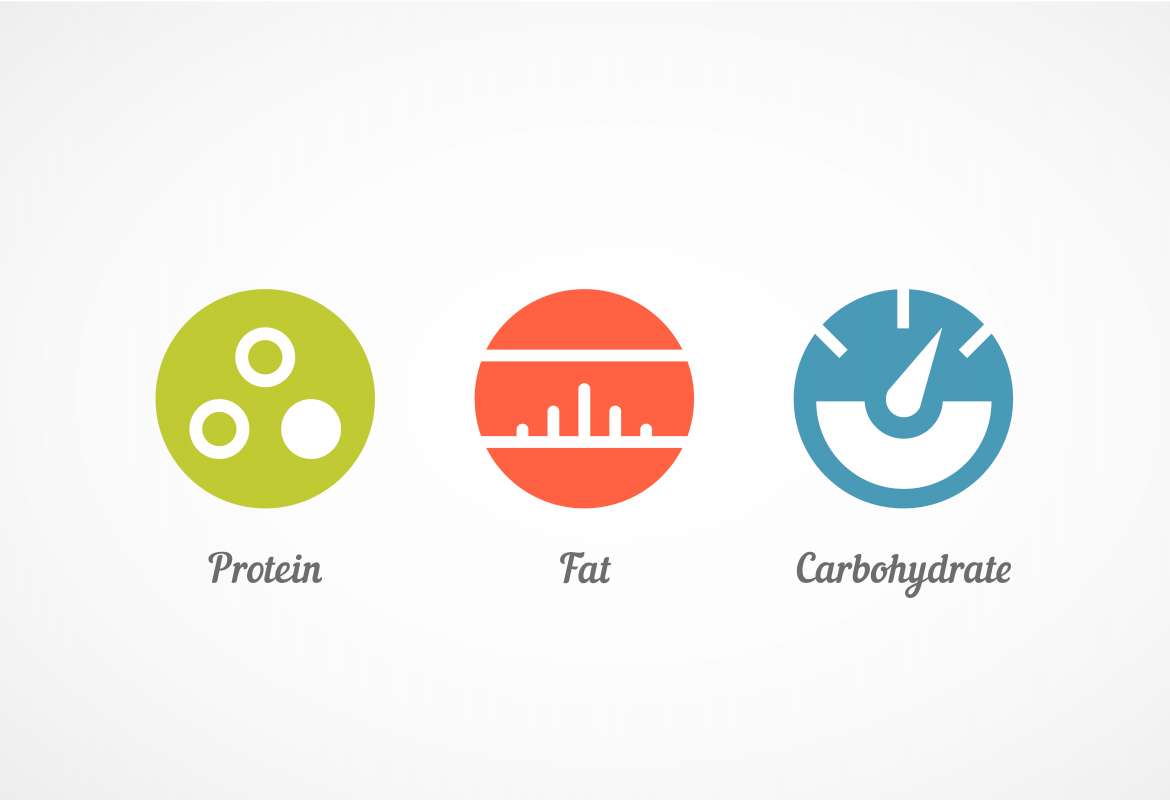Calculating your macros for weight loss can be confusing, so in this post I will show you how to do it in less than 5 minutes. Getting this right is extremely important for your diet success and I will take you through the process step by step.
When setting up a weight loss diet most people begin with their calories, which is a good start, but if you don’t watch your macronutrients, so your daily amount of protein carbs and dietary fats, you will run into problems. As I explain in my post on weight loss vs. fat loss, your macros, especially your protein intake, will determine how you lose weight, which can be fat loss, muscle loss or water loss.
Of course, what we want to accomplish is pure fat loss so optimizing your macros is important in this regard. Here, protein is the most important macronutrient because it helps grow and maintain muscle tissue.
Your macros aren’t as significant as your calories but they do make a difference and take on an important role in any weight loss diet.
Want To Watch The Video Instead?
How Much Protein For Weight Loss?
Protein is by far the most important macronutrient when you are dieting. Why? Because protein, or more specifically amino acids, which is what protein is made of, are literally the building blocks of tissue. Having enough protein in your system is a necessary requirement to maintain muscle mass when wanting to lose fat.
That means if you don’t consume enough protein when dieting your body will not only burn fat but also your hard earned muscle. This is not what we want to accomplish. Therefore, it’s important that you know how much protein you need to consume every day.
Fortunately, this is pretty straightforward. The optimal protein intake lies anywhere between 0.8g to 1.0g per pound of body weight per day. This range is what has shown to maximize muscle growth in clinical studies and should be your daily goal. This assumes you exercise regularly and also do some sort of resistance training. If you don’t exercise at all or just do cardio you can likely go a little below this range because you don’t stress your muscles as much. But since my students are motivated and know of the benefits of resistance training I will assume you do hit the gym regularly.
Let’s look at an example to clarify this. A 180lb male, for example, would choose an average intake of somewhere between 145g and 180g of protein per day. If you hit this range every day you will be fine and don’t need to worry about losing muscle when dieting.
If you want to be even more specific about where exactly you fall along this range here are the two factors that will determine this: body fat percentage and activity level.
Simply put the leaner you are, meaning the more muscle instead of fat you have the more protein your body requires. The same goes for people who are more active (either through their training, during their hobbies, or while working). If you you’re leaner than 10% body fat for men and 20% for women and you are very active and train with high intensity then you probably want to shoot for 1 gram of protein per pound of bodyweight. However, most beginners will get enough with 0.8g of protein per pound.
How Much Fat For Weight Loss?
On to your ideal fat intake during weight loss. This is a lot simpler than calculating protein needs. In order to maintain your general health and fitness, you need only around 0.3 grams per pound of fat-free mass per day. Here, “fat-free mass” is everything in your body that isn’t fat, i.e., muscle, water, and bone.
This translates to roughly 15 to 20% of your TDEE for most people and is a target value you should not undercut both when dieting to lose weight and to build muscle.
Assuming our 180 pound man has a TDEE of 2500 calories that means he should consume around 20% of that in fats which would be 500 calories.
That might sound like a lot at first but remember that 1 gram of fat has around 9 calories so this only translates to about 45 to 55 grams of fat per day.
How Many Carbs For Weight Loss?
The role of carbs in weight loss diets is very controversial and always hotly debated. I will try to make setting up your diet as simple as possible, so here is my recommendation based on what we know from scientific studies about optimal carb intake.
If you don’t exercise then carbs are completely optional and you can include them or cut them from your diet. But if you regularly exercise then they are pretty much a must. As I explained in other posts carbohydrates are the body’s preferred energy source and as long as you stick to quality sources you will feel the difference.
Ok, so let’s assume you do exercise. How many grams of carbs do you need then? In my dieting program, I give specific recommendations based on different workout intensities.
These are also valid in weight loss diets but would make things a little too complicated right now. So what I recommend is that if you exercise and your stomach can handle carbs you simply fill the rest of your daily calories with carbs.
Putting Everything Together
Based on the ideal intakes for protein, carbs & fat we can set up a diet that will be ideal for fat loss. Let’s take the example of the 180 lb man who works out three times per week.
We estimated his TDEE to be around 2500 calories. To create a calorie deficit will we subtract 20% and get an ideal daily calorie intake of 2000.
Protein: 0.8 x 180 is 145 grams. So his ideal protein intake is at least 145 grams per day (and since 1 gram of protein has 4 calories that translates to about 600 calories).
Fat: 20% of 2500 calories is 500 calories, which is his minimum fat intake. Because 1 grams of fat has 9 calories this translates to roughly 55 grams of fat daily.
Carbs: This leaves us with 900 calories unaccounted for. Like I said before, I recommend he fill the rest with carbs. This means he should consume around 900 calories in carbs or 225 grams because like protein, 1 gram of carbs has 4 calories.
That was pretty easy, right?
Simply calculate your total calories and then subtract your calories from protein and fat while leaving the rest for carbs.
But what if you don’t exercise?
Let’s assume you have a TDEE of 2000 calories and don’t exercise. What would your macronutrient split look like?
First, to create a calorie deficit we again subtract 20% from 2000 calories, which leaves us with 1600 calories as your target value.
The calculation for protein also stays the same. Again you multiply your weight by 0.8 (for someone who weighs 180 lbs this would 145 grams per day)
As for fat, take your TDEE and multiply it by 0.2 (in this case: 2000 x 0.2 = 400 calories or 45 grams of fat)
If we subtract the calorie values for protein and fat from 1600, this leaves us with 600 calories unaccounted for. Now, unlike someone who exercises you don’t really need the carbs for workouts and could theoretically keep them to a bare minimum.
So, this leaves you with a choice. You can fill the remaining calories with either more protein, more fat or carbs or a mix of the three. Even though either choice would be fine from a general health point of view (as long as you stick to quality foods), I still recommend you fill them with either carbs or protein.
Why?
Because fat is simply too calorie dense. 1 gram yields 9 calories which means you can much more easily overeat on foods high in fat from a calorie standpoint. another problem is that these foods don’t make you feel full for as long as quality complex carbs or protein.
The bottom line is that even though you don’t exercise I would still include some carbs in your diet (maybe 500 calories) and then use the remaining calories for some more protein (and maybe a bit more fat).
This strategy will lead to a lot less hunger and craving than if you allocated all your extra calories to fat. Of course, you also want to take into account your personal preference. There are people out there who need a higher fat intake, so always adjust these rules to your needs.



